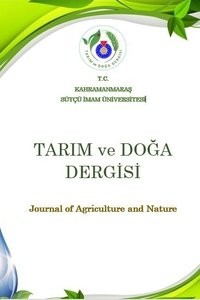Dikis Büzgüsüne Etki Eden Denim Kumas ve Dikis Đpliği Parametrelerinin Arastırılması
Denim kumas, korelasyon analizi, dikis ipliği, dikis büzgüsü
Investigation of Denim Fabric and Sewing Thread Parameters Affecting Seam Pucker
Denim fabric, correlation analysis, sewing thread, seam pucker,
___
- Ağaç, S. 2003. Erkek Pantolonu Üretiminde Kalite Kontrol Noktaları. Tekstil Maraton Dergisi, 13 (67): 71-80.
- Anonim. 2004. Optimizing Seam Performance for Denim Garments. http://www.amefird.com/ optseamperformance4. pdf. (18.06.2006)
- Anonim. 2000. Garment Defect Photo Book. GAP Inc, Yayın No: Q3, Ohio, 51s
- Behera, B.K., Chand, S., Singh, T.G., Rathee, P. 1997. Sewability of Denim. International Journal of Clothing Science and Technology, 9 (2): 128-140. Card, A., Moore, M.A., Ankeny, M. 2006. Garment Washed Jeans: Impact of Launderings on Physical Properties. International Journal of Clothing Science and Technology, 18 (1): 43-52.
- Anonim. 1998. Coats Đplik ve Dikis Teknolojisi. Güzel Sanatlar Matbaası, Yayın No: 1, Đstanbul. 179s.
- El-Okeily, M., 1995. Dokuma Kumasların Giysiye Çevrilebilirliğinin Modellenmesi. Tekstil Maraton Dergisi, 3 (5-6): 43-47.
- Erdoğan, Ç., Çakaloz, O. 1992. Dikim Sırasında Görülebilecek Hatalar ve Nedenleri. Ege Üniversitesi Tekstil ve Konfeksiyon Dergisi, 9 (5): 386-389.
- Joglekar, A.M. 2003. Statistical Methods for Six Sigma. Wiley Publication, Yayın No: 1, Plymouth, 315s.
- Kaya, A. 2002. Tas Yıkama. GAP International Sourcing Liasion Office, Yayın No:1, Đstanbul, 48s.
- Mori, M., Niwa, M. 1994. Investigation of the Performance of Sewing Thread. International Journal of Clothing Science and Technology, 6 (2- 3): 20-27.
- Pavlinic, D.Z., Gersak, J., Demsar, J., Bratko, I. 2005. Predicting Seam Appearance Quality. Textile Research Journal, 76 (3): 235-242.
- Rogale, D. 1995. Garment Sewing Processing Parameters. International Journal of Clothing Science and Technology, 7 (2-3): 56-60.
- Saville, B.P. 1999. Physical Testing of Textiles. The Textile Institue CRC Press, Yayın No: 1, Abington, 310s.
- Taylor, M.A. 1972. Technology of Textile Properties. Forbes Publications Ltd, Yayın No: 3, London, 368s.
- Yayın Aralığı: 6
- Başlangıç: 1997
- Yayıncı: Kahramanmaraş Sütçü İmam Üniv.
Yayım Elemanlarında Bulunması Gereken Profesyonel Yeterlilikler: Kahramanmaras Đli Örneği
Katı Yakıtlı Buhar Kazanında Yakma Fanının Bulanık Mantık Denetleyici ile Kontrolü
Hasan Rıza ÖZÇALIK, Ali TÜRK, Ceyhun YILDIZ, Zafer KOCA
Bir Tek Nöron Kullanılarak Resimler Đçerisinde Göz Kısmının Bulunması
Yavuz Selim İŞLER, Metin ARTIKLAR
Özkan KARAMAN, Mehmet KORKMAZ, Yaşar ASLAN
Dikis Büzgüsüne Etki Eden Denim Kumas ve Dikis Đpliği Parametrelerinin Arastırılması
Kahramanmaras’ta Tüketime Sunulan Tavuk Etlerinde Listeria Türlerinin Patojenitesi’nin Belirlenmesi
Ferdağ Çolak ÇOLAK, Metin DIĞRAK, Zelal AKSOY
Yusuf NİKPEYMA, Emine SARSAL NAMTI
Doğu Kayını (Fagus orientalis Lipsky.) Tohumlarının Kimyasal Bilesimi
